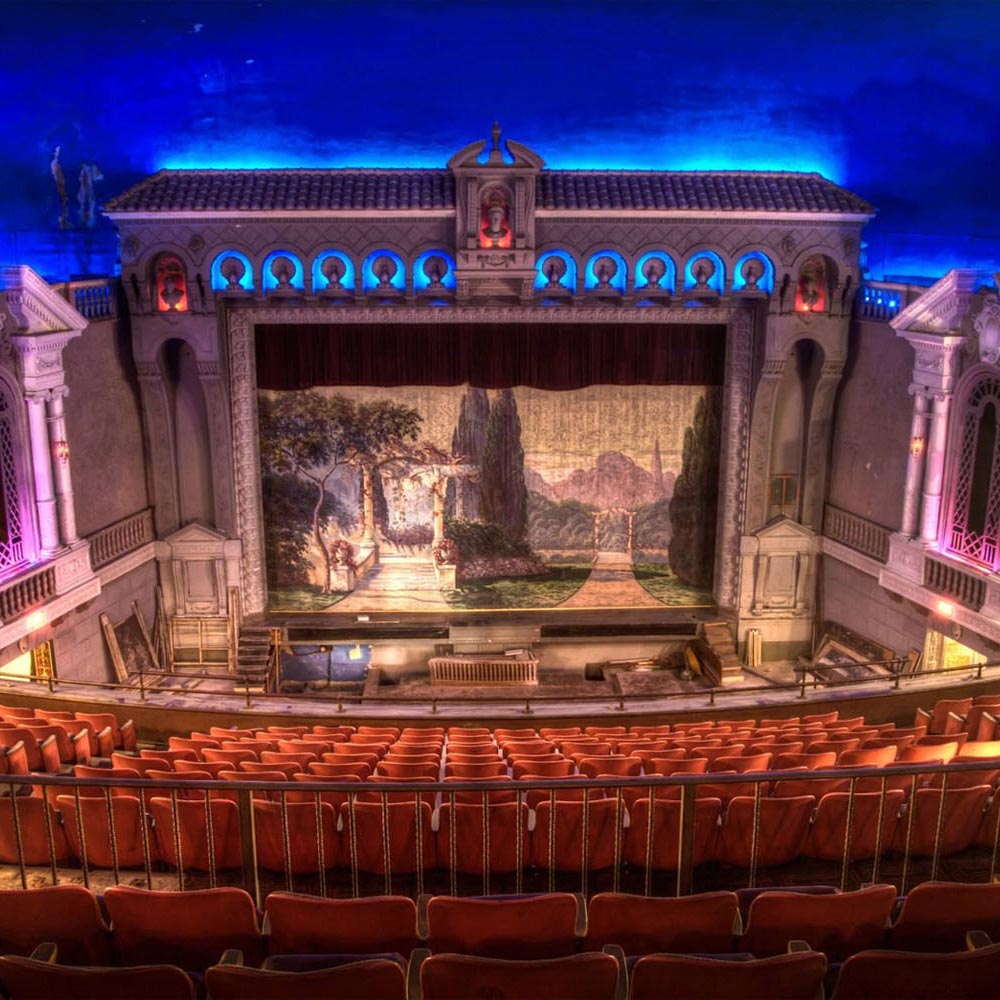
<< Go Back up to Atmospheric Theatres Main Page



 (added 31st January 1985)
(added 31st January 1985)The 2,000-seat Capitol Theatre opened in early 1928 with a screening of the movie College (1927)  starring Buster Keaton. The Capitol Orchestra performed the “Capitol March” under the direction of its composer Dale Owens. Three vaudeville acts completed the bill.
starring Buster Keaton. The Capitol Orchestra performed the “Capitol March” under the direction of its composer Dale Owens. Three vaudeville acts completed the bill.
Plans for the theatre had been announced in 1924 by Walter S. Butterfield. The theatre was subsequently designed by renowned architect John Eberson and built by the Flint Building Corporation for the Butterfield Theatre chain. The general contract was awarded to Henry Vander Horst of Kalamazoo, whom at the time had recently built the State Theatre in Kalamazoo, Michigan. The Architectural Decorating Company of Chicago and New York supplied the plasterwork; artificial trees, flowers, vines, etc, were created by G. Reising and Company of Chicago.
The theatre was originally equipped with a 3-manual, 11-rank Barton theatre organ. It was removed in 1976 and donated to the Flint Institute of Music  and installed into the Dort Music Center’s MacArthur Recital Hall
and installed into the Dort Music Center’s MacArthur Recital Hall  .
.
Sound motion pictures arrived at the Capitol Theatre on 12th April 1929 with a showing of The Pagan  starring Ramon Navarro. The Keith-Albee Vaudeville Exchange provided live acts at the Capitol until about 1931 when it was discontinued due to the success of sound motion pictures. From then until the mid-1930s live performances were few and the organ ceased to be used.
starring Ramon Navarro. The Keith-Albee Vaudeville Exchange provided live acts at the Capitol until about 1931 when it was discontinued due to the success of sound motion pictures. From then until the mid-1930s live performances were few and the organ ceased to be used.
The theatre closed in 1996 and lay dormant for 20 years. Restoration work began in 2015 and the theatre reopened in December 2017, managed by the Flint Institute of Music  .
.
 Further Reading
Further Reading .
. .
.Photographs copyright © 2002-2025 Mike Hume / Historic Theatre Photos unless otherwise noted.
Text copyright © 2017-2025 Mike Hume / Historic Theatre Photos.
For photograph licensing and/or re-use contact us here  . See our Sharing Guidelines here
. See our Sharing Guidelines here  .
.
| Follow Mike Hume’s Historic Theatre Photography: |  |
 |